The Acquisition and Display of Rodin’s The Age of Bronze (c.1877)
Object in focus: at the Barber Institute of Fine Arts
The Henry Barber Trust owns two sculptures by Auguste Rodin, one of which is a life-size cast of his celebrated work, The Age of Bronze. Under what circumstances did this sculpture join the collection at the Barber Institute of Fine Arts, and how is it displayed at the gallery? Using previously unpublished archival material, this article explores these questions and offers new perspectives on the Barber's sculpture collection.
- Helen Cobby
- Collection: The Barber Institute of Fine Arts
- Download a PDF of this article
- Key words: Auguste Rodin, Sculpture, Display, Reproduction, History of Collections
Auguste Rodin's (1840-1917) sculpture The Age of Bronze (fig.1), first exhibited in 1877 as a plaster model, was initially considered highly provocative by critics but ultimately launched his successful career [1]. The Age of Bronze has earned its place as one of his most famous sculptures, along with The Thinker (bronze, 1904) and The Kiss (marble, 1882). This article will firstly explore Rodin's creation and display of The Age of Bronze, its critical reception, and some of the public UK collections that came to acquire the work. It will then turn to the Barber Institute of Fine Arts, and focus on the acquisition and presentation of the gallery's cast of the sculpture. In particular, the article will use previously unpublished archival material to discuss the method of display at the Barber, which relied upon the close involvement of the building's architect, Robert Atkinson (1883-1952). It will then explore some of the particular interpretations and ways of looking encouraged by this specific display. In this way, this article aims not only to reveal some of the curatorial decisions made at the Barber, but to stress the importance of considering collection and exhibition histories in understanding the range of meanings of a work of art.
Fig.1 Auguste Rodin, The Age of Bronze (c.1887), bronze, 180.5 x 68.5 x 54.5 cm. Inv.No.42.4 ©The Henry Barber Trust, The Barber Institute of Fine Arts, University of Birmingham.
The Age of Bronze appears naturalistic in its portrayal of a nude young man. This realism does not seem typical of Rodin’s oeuvre. Indeed, he rarely chose to sculpt life-like figures, valuing dynamic, expressive and even fragmented parts of bodies over anatomical correctness. However, here, the figure's right leg is bent in a traditional contrapposto pose, where the man appears to stand with his weight on one leg, which causes the hips and shoulders to rest at opposite angles and thereby convey a sense of dynamism. Contrapposto was first used – and used extensively – in ancient Greek sculpture from the mid to late fifth-century BCE, and was extremely important in the development of sculptural practice. [2] The use of such a pose for The Age of Bronze emphasizes not only Rodin's indebtedness to classical sculpture, but also his fascination with conveying expressive movement, contained here within the figure's moment of awakening. It certainly helps to communicate, albeit subtly, the tensions and changes experienced by the figure as it moves from resting to awakening - perhaps in both body and mind. The pose of the figure's hands adds to this suggestion of movement and growth into a conscious being, particularly because the right hand is placed on the crown and so helps guide the viewer's eyes to the young man's head, the centre of thoughts and feelings. This concentration on his head is enhanced by the way it is roughly framed by his fists. The left hand, raised above shoulder height, was originally intended to hold a long spear, but Rodin quickly removed this to aid the ambiguous nature of the pose. Rodin's success at conveying expression and movement is regarded as among his greatest achievements.
The Age of Bronze is Rodin's earliest full-length sculpture to have survived in the form of later bronze casts of the original plaster model. Rodin was struggling to be recognised as an artist while he was making The Age of Bronze. He worked on it over a period of 18 months in 1875-76 in Belgium, where he had moved to from Paris following the Franco-Prussian War (1870-71). He first exhibited the sculpture as a plaster at the Cercle Artistique in Brussels in 1877, under the title The Conquered Man. It has also been known as The Awakening Man or The Vanquished One, the latter perhaps in reference to France's painful defeat in the Franco-Prussian War. However, the sculpture depicts an ambiguous moment of human awakening – is the awakening to pain or joy?
Shortly after being shown in Brussels, the work, still in plaster, was first exhibited with the title The Age of Bronze at the Salon of the Société des Artistes Français in Paris [3]. The title now referred to a period in mankind's development. It caused a great scandal due to the very life-like appearance of the figure; critics accused Rodin of using a life cast of his sitter, a young Belgian soldier called Auguste Neyt. Traditional French sculpture was usually based on historical or mythological subjects with particular, coded poses that were relatively easy to read. Thus, the sculpture's ambiguous pose and Rodin's concentration on the aesthetic form of Neyt's body also grated with the artistic circles of the time. Rodin was appalled by the criticism, and appealed to friends, fellow artists, writers, and members of the jury of the Fine Arts Exposition at the Paris Salon. He was especially intent on proving that the realism of his work was a product of intense study, and asked a prolific photographer of nudes, Gaudenzio Marconi (1841-85), to take photographs of Neyt naked in the pose of the sculpture. The jury never looked at these images, however [4].
The scandal inadvertently raised Rodin's profile both in France and internationally. Moreover, established sculptors, such as Henri Chapu (1833-91) and Albert-Ernest Carrier-Belleuse (1824-87), as well as the Belgian critic Jean Rousseau, supported Rodin and helped to convince the Salon officials of his integrity [5]. With his name now cleared, in 1880 Rodin was able to exhibit the work in bronze at the Paris Salon, the city's prestigious annual contemporary art exhibition [6]. The first of over fifty bronze casts of The Age of Bronze was made by Thiébaut Frères in May 1880, at the instruction of the head of the Salon's fine arts administration. The French Ministry of Fine Arts purchased this first bronze and in 1884 had it displayed in the Luxembourg Gardens, Paris; it is now in the Musée d'Orsay. This was the first grand-scale purchase of Rodin's work, and marks a turning point in his career. He was now accepted as a respected professional artist [7].
More than fifty bronze casts of The Age of Bronze were made to Rodin's specifications, both at the size of the original plaster and smaller in scale. Six of these casts are now in public UK collections; the earliest, cast in 1905, is at Leeds City Art Gallery [8]. The Barber's example is one of the full-scale versions. It was cast in the foundry of Alexis Rudier in Paris before 1917; the foundry's mark can be seen on the base of the work. Rudier became the principal foundry for Rodin's bronzes from 1902 onwards, and his exclusive foundry from 1913 until his death in 1917. It was later appointed the official bronze founder of the Musée Rodin in Paris, which opened two years after Rodin died, in 1919. The other mark on this work is Rodin's signature, which is clearly visible on the top of the bronze base, next to the figure's left foot (fig. 2). Rodin has incised his name into the surface of the casting wax, creating bold grooves in the resulting bronze that are indicative of a confident – and proud – flourish of a signature.
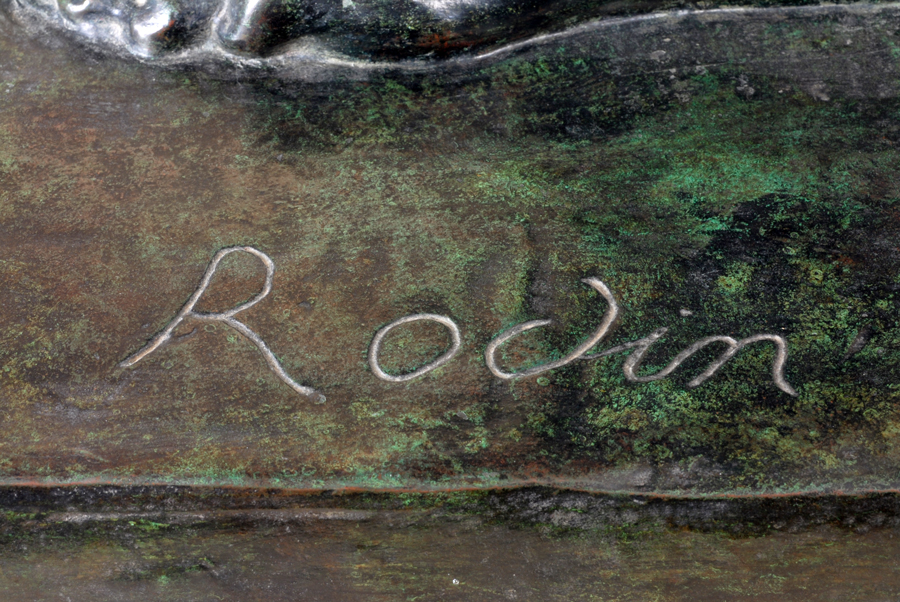
Fig. 2 Detail of Rodin’s signature on the Barber’s The Age of Bronze ©The Henry Barber Trust, The Barber Institute of Fine Arts, University of Birmingham.
The Barber Institute's first director, Thomas Bodkin (1887-1961) purchased the sculpture at the Christie's sale of Lady (Mary) Davis' effects on 27 March 1942, for £273. The work had been in the collection of Sir Edmund and Lady Davis at Chilham Castle in Kent, and it is thought that Sir Edmund had purchased it directly from Rodin himself [9]. Unusually, six other sculptures by Rodin were also for sale in this lot (no.130), including the bronze figures Eve and a reduced version of The Burghers of Calais. The Age of Bronze was arguably the most widely known of the Rodin works at this sale, perhaps making it an obvious choice for Bodkin. Indeed, although the Barber Institute archives have no first-hand evidence from Bodkin to explain his specific reasons for acquiring this work, it does fit snugly with the collecting policy drawn up in 1932 by the gallery's founder, Lady Barber (1869-1933). Here she stated that the collection should be ‘of that standard of quality required by the National Gallery and the Wallace Collection’. [10]. She also stipulated that no works made later than 1899 should be acquired, thus making Rodin's sculpture one of the most modern works of art that Bodkin was able to collect for the Institute [11].
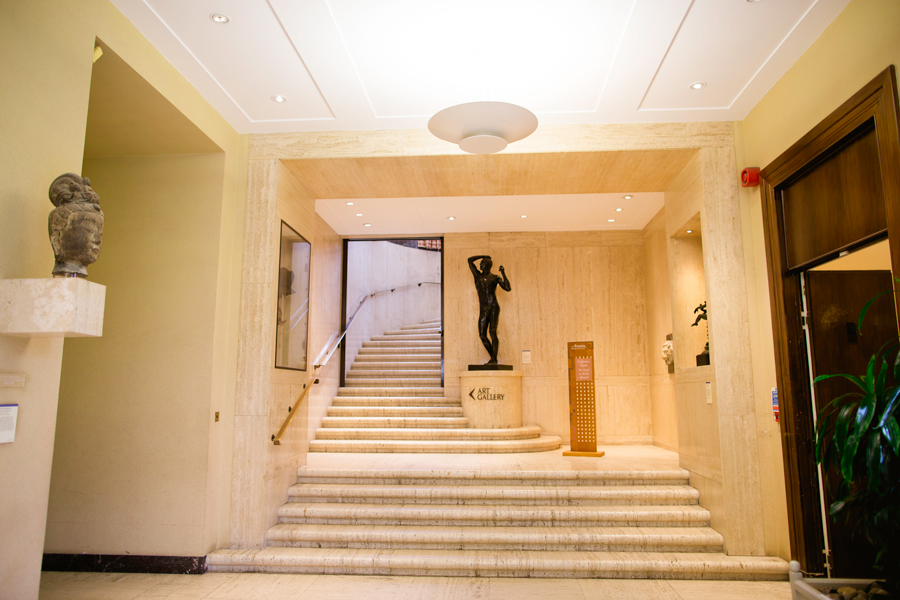
Fig.3 Detail of the Barber’s Rodin plinth by the main staircase, ©The Henry Barber Trust, The Barber Institute of Fine Arts, University of Birmingham.
At the Barber, the sculpture was exhibited in the entrance hall, next to the steps leading up to the art galleries. This followed Bodkin's (and the architect Atkinson's) wish to acquire sculptures to provide a grand processional route to the main galleries [12]. The Age of Bronze was displayed on a bespoke marble plinth, which had been reserved for such a work of art [13]. This plinth remains a striking architectural feature in the foyer area; it seamlessly joins onto the marble wall behind it and to the steps leading up to the art galleries (fig.3). This plinth was soon altered to enable it to rotate and display the sculpture from different angles. Robert Atkinson, who had designed the Barber building in 1932, made the plans for the rotating plinth. His working drawing, dated 9 January 1947 and now in the Barber's archive, presents a bird's eye view of the new plinth and designs in cross section (fig.4). These reveal how the square bronze base of the sculpture sits on a circular turntable embedded within a new slab of marble (marked in a red wash in the drawing) that follows the original semi-oval shape of the plinth, but also adds a lip over the original edges so as to hide the new mechanism. From looking at this subtle addition, one might never know that the plinth was designed to be rotated, allowing the sculpture to be seen from all angles (fig.5). Atkinson's drawing also shows where the marble is cut through on the new covering in order for the sculpture to rotate safely. Several notes point out that there is sufficient elbow clearance (1.9 cm) for the sculpture at all points in the rotation, certainly something to be mindful of as the work is positioned close to the wall. A ghostly elbow is even drawn into the main bird's-eye-view plan towards the top right of the sheet.
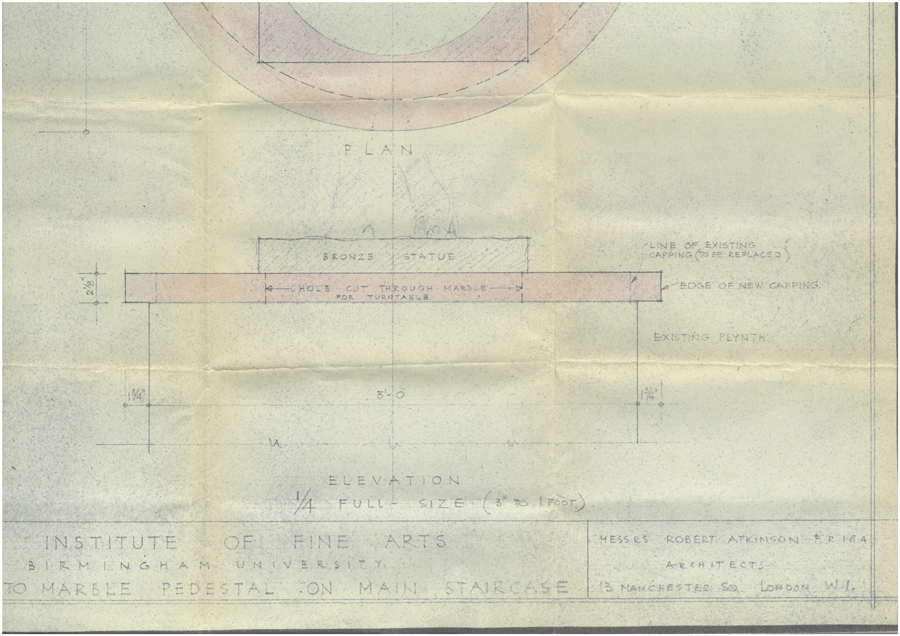
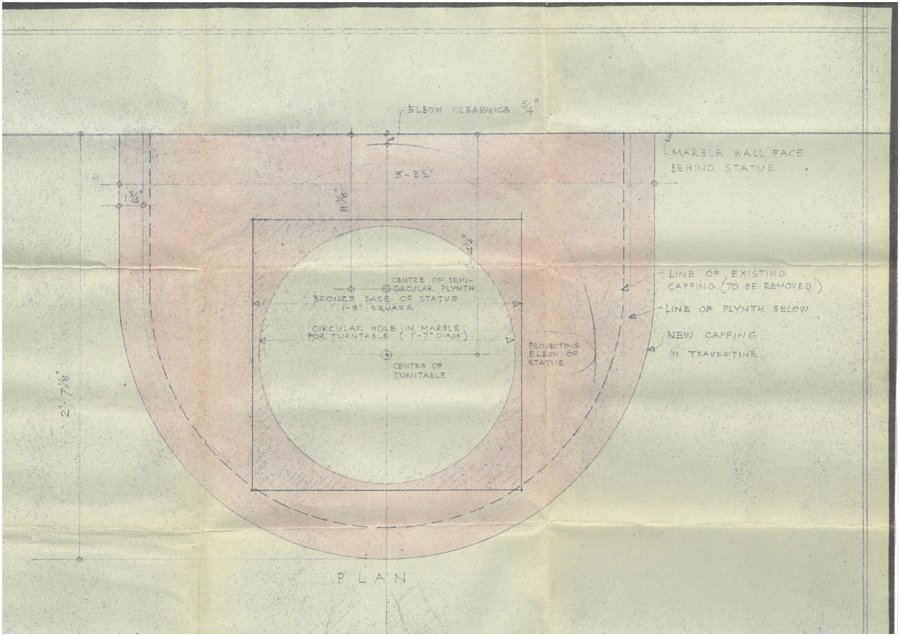
Fig.4 Details of Robert Atkinson’s working drawing for the Barber’s Rodin plinth (1947), pencil on paper, 49 x 62 cm ©The Henry Barber Trust, The Barber Institute of Fine Arts, University of Birmingham.
As the sculpture is positioned near the wall, visitors are unable to walk all the way round the work, so the rotatable plinth is extremely important for an engaged, and arguably full, viewing experience [14]. Establishing a viewing experience in the round was common practice for earlier sculptors, especially the Italian artist Antonio Canova (1757-1822). He often challenged the frequent and historic complaint that sculpture was stiff and static, and required the viewer to move around the work in order to appreciate it fully. He did this in innovative ways, which included selecting a rotating plinth for his marble sculpture The Three Graces (1814–17), and incorporating a motor inside the wooden base of his sculpture Pauline Borghese as Venus Victrix (1808) that enabled it to rotate [15]. These notions and methods of display undoubtedly influenced Rodin, who was greatly inspired by Italian sculptors since visiting Italy in 1875-76.
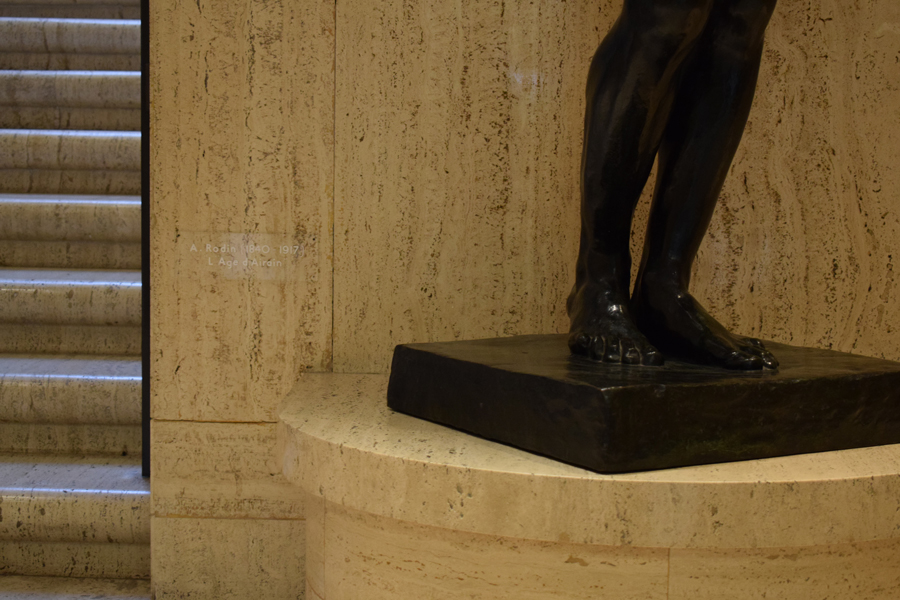
Fig.5 Close up photograph of the Barber’s Rodin plinth, showing its join onto the wall ©The Henry Barber Trust, The Barber Institute of Fine Arts, University of Birmingham.
The idea of viewing sculptures from different angles with an implicit notion of movement is evident in the copious number of often annotated photographs that Rodin commissioned of his own work. Many of these photographs portray the same sculpture from multiple viewpoints that, together, build up a lively depiction of the sculpture from many angles. This sort of viewing experience seems particularly fitting for his work, as he was intent on creating sculptures with dynamic poses that communicated highly charged expressions. Moreover, there is often no right or dominant angle at which to view Rodin's work. In fact, different meanings may even emerge from different viewing angles. The Age of Bronze appears vulnerable, even 'flat' and static, when viewed straight on – it is when the figure is seen from the side or at an oblique angle that it appears to rise as an organic mass of strength and emotion.
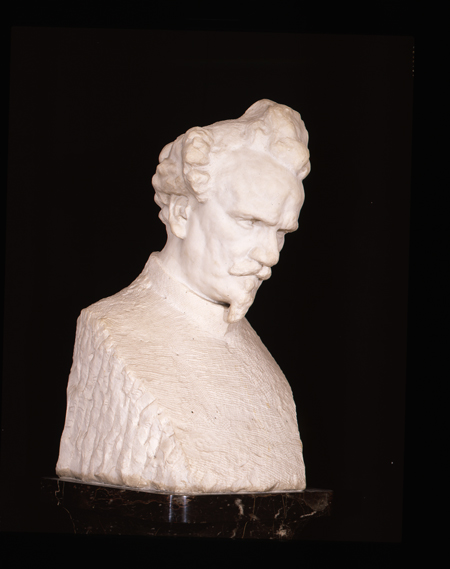
Fig.6 August Rodin, Bust of Henri Rochefort (1898), marble, 81.3 x 40 x 40 cm. Inv.No.38.5 ©The Henry Barber Trust, The Barber Institute of Fine Arts, University of Birmingham.
The only other sculpture at the Barber which is displayed on a rotating plinth is the gallery's other work by Rodin, his marble Bust of Henri Rochefort (1898), acquired in 1938 for £1,250. This formidable sculpture (fig.6) is displayed at the top of the stairs that lead from the foyer up to the galleries, and so the two Rodin works are in dialogue with each other despite being physically separated by the stairs and the floor levels of the Barber building [16]. The rotating mechanisms also make good use of the relatively tight spaces in which the works sit – they are removed from the viewer's own space due to the architectural context, yet their ability to rotate enlivens them and they can still be viewed from different angles if curators turn the sculptures on their plinths. The fact that these two sculptures are the only ones that rotate at the Barber seems significant in terms of Rodin's own interest in movement. It also reflects – and reinforces – Rodin's status as the greatest sculptor since Bernini, or even Michelangelo. Indeed, the Barber's plinths help to give prominence to the Rodin sculptures and mark them out as some of the most important within the collection. In the 1940s, the two Rodin works were the most 'modern' sculptures in the permanent collection. This, then, could be a further justification for Bodkin selecting them for display on the rotating plinths – they call for innovation and dynamism, in line with Rodin's own practice.
The ways in which visitors at the Barber can experience Rodin's sculptures are unique, as possible engagements with the works are guided by the Institute's specific method of display and its architecture. The experience is also unusual within the Barber itself because no other sculpture in the collection is presented in the same way. Few UK galleries currently position Rodin's work on rotatable plinths, or consider such close relationships between the sculpture and its architectural settings – and use this to enhance particular aesthetic aspects, intentions and interpretations. The decision to create a rotating plinth is particularly appropriate for The Age of Bronze, because by offering different viewing angles, the display method enhances – and even celebrates – the multiplicity and ambiguity inherent in Rodin's figure. By engaging with The Age of Bronze at the Barber, one is also automatically engaging with the history of the Institute, its architecture, collecting policy and curatorial decisions.
About Helen Cobby
About Helen Cobby
Helen Cobby is the Assistant Curator at the Barber Institute of Fine Arts.
Endnotes
Endnotes
[1] For an overview of Rodin's career, see Clare Vincent, 'Auguste Rodin (1840-1917)', in Heilbrunn, Timeline of Art History (New York: The Metropolitan Museum of Art, 2000), (October 2004), accessed 10 August 2018.
[2] See Thomas Braun et al, ‘Ancient Greece’, chapter IV, (i) (a), Grove Art Online (2003),
[3] Ruth Butler, Rodin: The Shape of Genius (New Haven and London, 1993), p.104.
[4] Musée Rodin, ‘Auguste Neyt, Model for 'The Age of Bronze”, accessed 10 August 2018.
[5] Butler (1993), p.104; p.120.
[6] Although each original Rodin plaster is a unique model from his hand, it is also vulnerable to damage and usually considered secondary to the sometimes numerous bronze versions cast from it – generally made without direct oversight from the sculptor himself (indeed, many Rodin bronzes were cast posthumously). While Rodin wanted to disseminate his models as widely as possible through replica casts, these were only made (in his lifetime) when commissioned by a collector. On Rodin’s production methods, see Victoria & Albert Museum, 'Auguste Rodin Production Techniques' (2018), accessed 28 November 2018.
[7]The Ministry also gave Rodin his first state commission, for a pair of monumental bronze doors intended for a planned decorative art museum in Paris. Known as The Gates of Hell, this was to be arguably Rodin's greatest masterpiece, albeit not cast until after his death.
[8] Dave Roberts, 'Sculpture. Auguste Rodin, The Age of Bronze', Leeds Art Gallery Online (2007), accessed 31 October 2018.
[9] For an overview of Davis' business career and art collecting, see Ian Phimister, 'Davis, Sir Edmund Gabriel (1861–1939), mining financier and art collector', Oxford Dictionary of National Biography (Oxford 2004), online edition, January 2008.
[10] See Robert Wenley (ed.) The Barber Institute of Fine Arts: Foundations of a Collection (London, 2012), p.92.
[11] In 1967, the original Trust Deed was amended so that later works could be acquired, provided they were at least 30 years old. Rodin's reputation in the 1940s, at the time of Bodkin's purchase, was arguably not as strong as it had been when he was alive. This was perhaps partly because of the reaction against his subjective technique and expressive subject matter by younger artists and critics. Indeed, his reputation was in decline for much of the early part of the mid-twentieth century, and this may have made his work more affordable for Bodkin. On the reception of Rodin in Britain, see Claudine Mitchell (ed.) Rodin: The Zola of Sculpture (Farnham, 2004).
[12] Wenley (2012), p.98.
[13] Bodkin had intended to acquire a markedly different sculpture from Rodin’s dynamic, nude bronze - the heavily draped second-century CE Roman marble figure known as the Hope Athena, which is now in the collections of the Los Angeles County Museum of Art. See Wenley (2012), p.99; p.154, n.19.
[14] On the relationship between sculpture, pedestal and viewers, see: Alexandra Gerstein (ed.), Display and Displacement: Sculpture and the Pedestal from Renaissance to Post-Modern (London, 2007).
[15] See Victoria & Albert Museum, 'The Three Graces by Antonio Canova', (2018), accessed 31 October 2018.
[16] The Henry Barber Trust Minutes of 13 May 1938 state: “The Bust of Henri Rochfort (sic) by Rodin to be purchased, subject to the approval by Mr Atkinson, as to suitability, for erection on the plinth at the top of the main staircase.” It is interesting that the purchase was made with a specific intention of display in mind, and that the approval seemed to rest with the architect, Robert Atkinson. Furthermore, the Trust Minutes from 9 March 1939 provide a few details about the marble base for the Rodin bust. The Minutes record that the base was approved, and commissioned from Messrs W.W. Jenkins (with a model from Messrs George Jackson and Sons), which came to an estimated total of £69.00). Henry Barber Trust Minutes, 13 May 1938, Folio 55; Henry Barber Trust Minutes 9 March 1939, Folio 75.